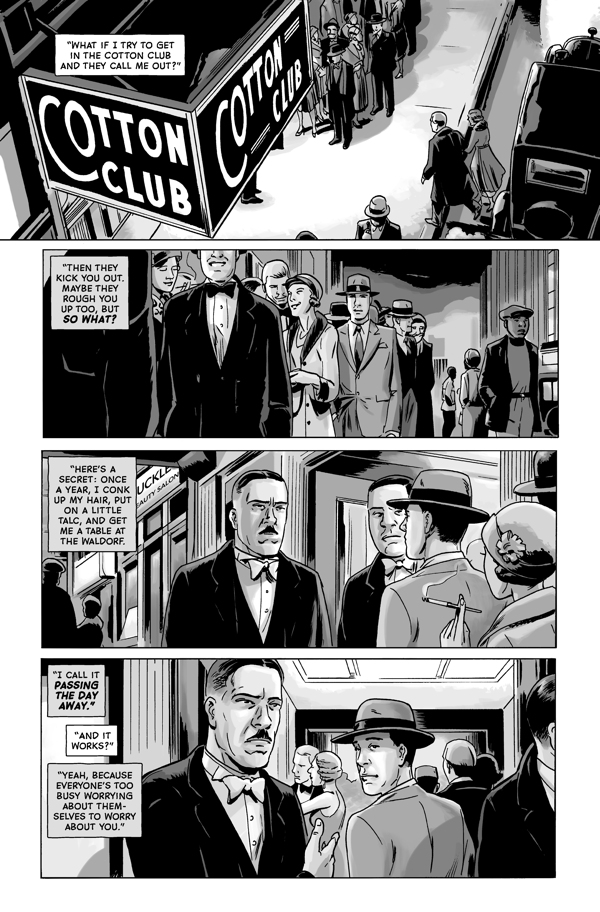
Johnson delights in the challenge of writing graphic novels.

"I grew up looking very European - my father is Irish and my mother is black - so I've been fascinated with those who've had similar experiences in the past." Johnson so closely identified with the main character that Vertigo photographed him to use as the cover image. Like Zane, he's often taken for a Caucasian. "I've been preparing to write this particular story all my life," Johnson said in a recent interview. The author of two novels, Drop (2000) and Hunting in Harlem (2004), as well as the novella The Great Negro Plot (2007), he turned to writing graphic novels in 2005, with a short run of comics starring Papa Midnite, a character developed from the Hellblazer series.

Johnson, who moved to Houston from New York in 2007, is best known as a conventional fiction writer. Johnson has used this historical material as the basis for a classic noir crime story, one that includes satisfying doses of deceit, moral ambiguity and plenty of R-rated violence.Īlong the way, Zane will face down the Klan, greed, ignorance and a family of separatist hillbillies fomenting a religious race war. If this sounds like the setup for a preachy history lesson, fear not. Then he learns of yet another lynching about to take place, in Tupelo, Miss.Ī black man is accused of murdering a white woman, and what compels Zane to risk his life once again is news that the man scheduled to hang is Zane's own darker-skinned brother. When the book begins, Zane is back in Harlem, angling for a job as managing editor of the paper.

Incognegro tells the story of the fictional Zane Pinchback, an intrepid reporter for the New Holland Herald, who, in the mold of White, travels undercover through the South to report on lynchings.

Johnson is a recent addition to the faculty of University of Houston's Creative Writing Program. White's heroic acts inspired Mat Johnson's latest project, the graphic novel Incognegro (art by Warren Pleece, published by Vertigo, a division of DC Comics). His mission was risky, and White had a few close calls of his own when his identity came to light. He used that to gain the confidence of racist mobs who boasted to him about their crimes - accounts he then published in the New York papers. Though African-American, White had blond hair and blue eyes, which gave him the appearance of a Caucasian.


 0 kommentar(er)
0 kommentar(er)
